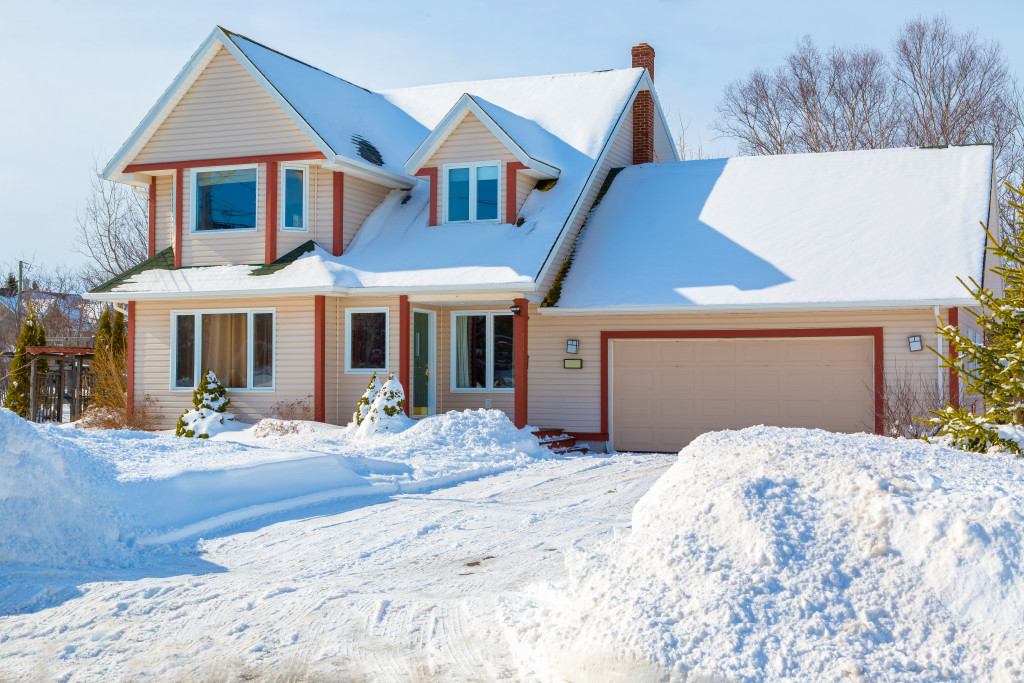As the temperatures start to drop and the leaves begin to change color, it’s time to start thinking about preparing your new home for the winter. Most homeowners don’t think about this until it’s too late and they’re dealing with frozen pipes or a leaky roof. While it may seem like a daunting task, there are some easy steps you can take to make sure your home is ready for the cold weather. Here are a few tips to get you started.
1. Inspect your windows and doors.
One of the first things you should do is check all your windows and doors to ensure they are adequately sealed. Cold air can seep into your home through cracks and gaps, so it’s important to ensure these areas are well-insulated. You can also buy weatherstripping or caulking to seal up any openings.
When inspecting your doors, pay special attention to the ones that lead to the outside. These are more likely to have drafts and need to be adequately sealed. Look for gaps around the door frame and ensure the door itself fits snugly against the frame. You can also use a door sweep to close gaps at the door’s bottom.
2. Service your furnace.
Before you turn on your furnace for the first time, it’s a good idea to have it serviced by a professional. This will help ensure that it runs efficiently and has no potential safety issues. Once it is serviced, change your furnace filter regularly throughout the winter months. This will help improve the air quality in your home and make your furnace run more efficiently.
Additionally, you want your HVAC system checked by a professional before the winter. This ensures that your system can adequately heat your home and run as efficiently as possible. They can also check for potential safety hazards and ensure that your system is properly ventilated. Find professional HVAC service providers in your area to get started.
3. Protect your pipes.
Another thing you’ll want to do is protect your pipes from freezing. To do this, you can insulate exposed pipes with foam tubing or wrap them in towels or rags. You should also let your faucets drip a little bit during cold snaps to prevent them from freezing solid. Many hardware stores sell pipe insulation kits that are easy to install.
If you’re going to be away from home for an extended period, it’s a good idea to shut off your water entirely. This will prevent any water left in the pipes from freezing and causing them to burst. Drain all the water from your pipes before you shut off the main water valve. But if your pipes are already frozen, don’t try to thaw them out yourself. This can cause the pipe to burst. Instead, call a professional plumber to safely thaw them out for you.

4. Prepare your fireplace
If you have a fireplace, now is the time to prepare it for use. Start by having it cleaned and inspected by a professional to ensure there are no safety hazards. You should also stock up on firewood and make sure you have a working fire extinguisher on hand.
When you’re using your fireplace, be sure to open the flue to let the smoke escape. It would help if you kept a glass or metal screen in front of the fireplace to prevent sparks from escaping. This will help keep your home safe and avoid any accidental fires. Be sure to extinguish the fire completely before you go to bed or leave the house.
5. Stock up on supplies.
Lastly, it’s always a good idea to have some essential supplies in case of an emergency. This includes non-perishable food items, bottled water, flashlights, batteries, and a first-aid kit. It’s also not bad to have extra blankets and warm clothing around just in case your heat goes out unexpectedly. You can never be too prepared for winter.
Think about what you need in an emergency, and make sure you have it on hand. By being prepared, you can help keep your family safe and comfortable all winter long.
Preparing your new home for winter doesn’t have to be a hassle! By following these simple tips, you can rest easy knowing that your home is ready for whatever Mother Nature has in store. Remember to seal any openings, service your furnace, protect your pipes, prepare your fireplace, and stock up on supplies. Taking these steps can help ensure that your home is safe and comfortable all winter long.
